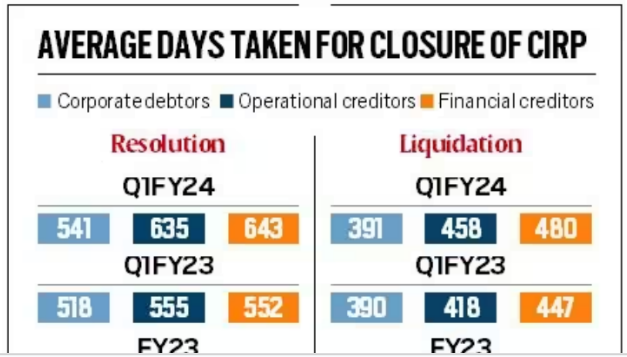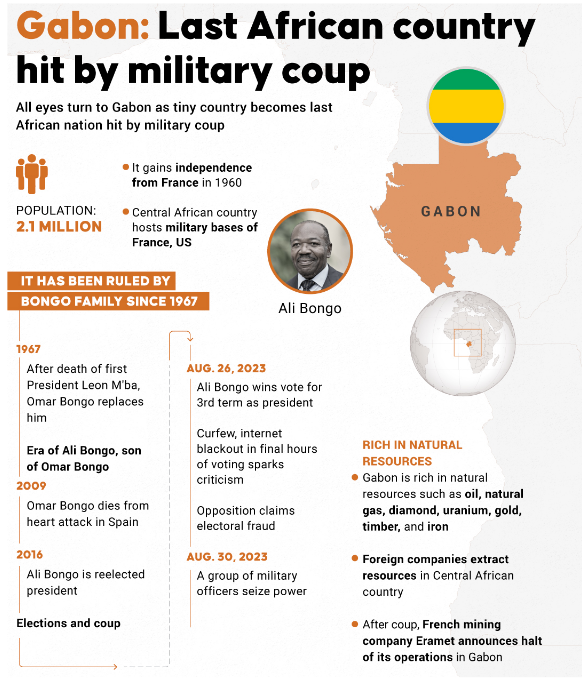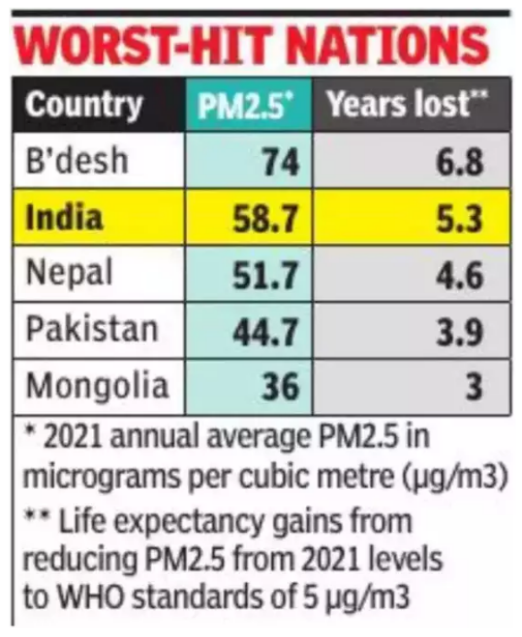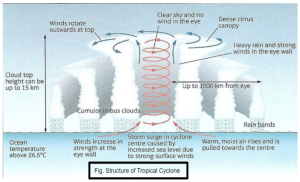COntext:
According to India Ratings and Research (Ind-Ra), average time taken for resolution of stressed assets under the insolvency law reached a three-year high in the June quarter.
About Insolvency and Bankruptcy Code (IBC), 2016

More About the News
News Source: Indian Express

Context: Recently, military officers in Gabon say they have taken power and put the president, Ali Bongo Ondimba, under house arrest.
About Gabon
Why so many coups?
News Source: BBC
Context:
Recently, revised production-linked incentive (PLI) scheme for IT hardware has received an “excellent” response from 38 companies, including global ones such as HP, Dell, Lenovo and Foxconn as well as local maker Dixon Technologies.
Expected Benefits of PLI 2.0 IT Hardware
|
About Production-Linked Incentive (PLI) Scheme 2.0 for IT Hardware
News Source: Livemint
Context:
Recently, National Pharmaceutical Pricing Authority (NPPA) has brought 44 new drugs under price control.
About Drug Price Control
News Source: Livemint
Context:
According to the Air Quality Life Index (AQLI) report for 2023, air pollution shortens the lives of the residents of Delhi by around 11.9 years.
Highlights of Air Quality Life Index (AQLI) report

About Air Quality Life Index (AQLI)
News Source: Indian Express
Context:
More about the news:
UN convention on rights of the child/Child Rights Convention:
UN Committee on Rights of the Child(CRC):
|
Need of the Guidelines:

Highlights of the General Comment No. 26 guidelines:
Best Practices:
|
Way Forward: Realizing children’s rights in a transforming climate:
News Source: DTE
Context: According to a study published in the journal Nature Communications, a combination of global warming and a cyclical event called the Pacific Decadal Oscillation (PDO) could make tropical cyclones more frequent in the coming years.
More on News
Cyclone
|
How Cyclones are formed

Reasons for Increasing the Frequency and Intensity of Tropical Cyclone
| Cyclones | Description |
| Biparjoy | Time: June 2023
Origin: Arabian Sea Landfall: Gujarat |
| Mandous | Time: December 2022
Origin: Landfall: Andaman and Nicobar Island and Tamil Nadu |
| Sitrang | Time: October 2022
Origin: Bay of Bengal Landfall: Odisha, West Bengal, Assam and A&N Islands |
| Asani | Time: May 2022
Origin: Bay of Bengal Landfall: Andhra Pradesh, Tamil Nadu, Karnataka and Odisha |
| Tauktae | Time: May 2021
Origin: Arabian Sea Landfall: Gujarat, Maharashtra and Karnataka |
| Yaas | Time: May 2021
Origin: Bay of Bengal Landfall: Odisha, Jharkhand, and Bihar |
| Nisarga | Origin: Arabian Sea
Landfall: Maharashtra |
Disaster Management
Conclusion
News Source: The Hindu
SC Verdict on Newsclick Shows Adherence to Due Pro...
Stay Invested: On Chabahar and India-Iran Relation...
Credit Rating Agencies, Impact on India’s De...
Catapulting Indian Biopharma Industry
Globalisation Under Threat, US Import Tariffs Have...
Global Report on Hypertension, Global Insights and...
<div class="new-fform">
</div>
